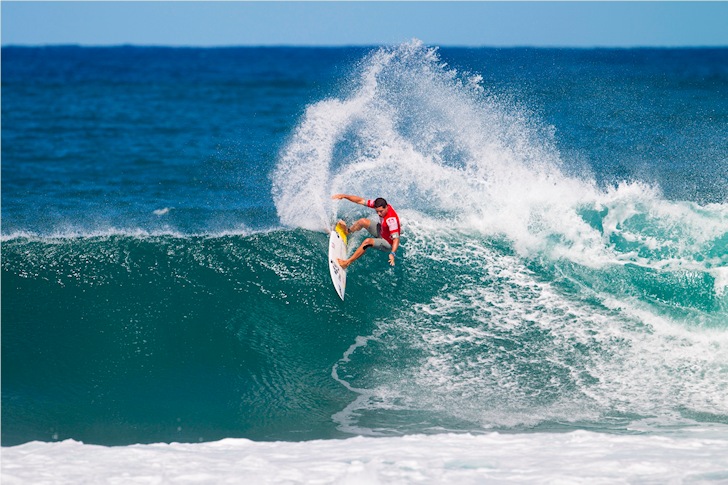Haleiwa is located at the western end of the Seven-Mile Miracle on the North Shore of Oahu, Hawaii.
Its tricky reef usually works best during winter, with mid-period Northwest swells coming far away from the Pacific Ocean. Haleiwa is known for its hollow rights, rippable sections, and powerful closeouts.
The Haleiwa Reef Finger is responsible for shaping the wave and the peak as we know it today. Add E/ENE trade winds, and you get classic conditions.
From two to four feet, Haleiwa is a rippable peak, with most surfers favoring the longer rights. Its racey walls allow for high-performance surfing at its best.
At four to six feet, the right can get hollow and heavy, and competitors will sit deep and look for the longest barrels.
When waves hit 10-15 feet, be prepared for the so-called "toilet bowl," an extremely difficult, shallow closeout in the end section of the ride that has claimed many surfboards.
Knowledge of the lineup is key at Haleiwa. As the surf increases in size, a strong rip develops across the lineup and can pull surfers out of position and right into the impact zone of an oncoming set.
Haleiwa Ali'i Beach Park is probably the most crowded surf spot on the North Shore of Oahu. The 1964 Dick Brewer Championships was the first surf contest to be held in the Seven-Mile Miracle.
